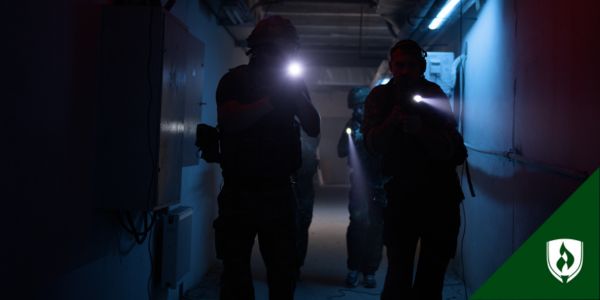If you’ve been on the force for a while, chances are you’ve seen crime of every shape and size.
It’s likely you’ve been shocked by the brutality of human behavior and disgusted a time or two by its deviousness. But what if I told you, the most serious and subversive threat facing 21st Century law enforcement isn’t drug cartels, serial killers or even mafiosi. It is cybercriminals.
Whether it entails hacking computer systems, recruiting terrorists, victimizing children, destroying government facilities or penetrating financial services, experts from the FBI, National Security Agency and Interpol all agree: cybercrime is the future.
It’s an intimidating word that probably doesn’t mean much to those who work for departments or agencies without computer experts on the payroll but, suffice it to say, cybercrime has grown into a $2 trillion-per-year global epidemic that is light years ahead of current law enforcement efforts.
So what can law enforcement do? How do we stop the hackers? Where do we begin policing the Internet?
The four TEDTalks below come from security experts Misha Glenny, Mikko Hypponen, Marc Goodman and James Stavridis.
Their talks detail the extent of cybercrime throughout the world and, perhaps most importantly, offer recommendations on what law enforcement and governments must do to stem the surge of computer crime.
Mikko Hypponen: The chief research officer at F-Secure Corporation, a Finnish computer security company credited with defeating several of the world’s most challenging computer viruses.
Synopsis: Hypponen says that today’s computer viruses are no longer written by hobbyists and teenagers, but by criminal syndicates making millions of dollars per attack and employing teams of people to circumvent the efforts of Internet security professionals.
He warns against the “underground marketplace” that is being built around online crime and questions our ability to fight crimes that take seconds to transcend jurisdictions and national boundaries.
Main message: “I love the Internet, I do … but if we don’t fight online crime, we are running a risk of losing it all. We have to do it globally and we have to do it right now. What we need is more global international law enforcement work to find online criminal gangs …. Even more importantly, we have to find the people who are about to become part of this online world of crime but haven’t yet done it.”
Misha Glenny: Veteraninvestigative journalist for The Guardian and BBC. Author of McMafia: A Journey Through the Global Criminal Underworld.
Synopsis: Glenny explores the social side of cybercrime by focusing on the hackers themselves. He profiles six historic hackers and questions whether America would be safer by employing – not imprisoning – these computer masterminds.
Glenny says that if we rely solely on the criminal justice system to dole out harsh penalties for cyber criminals, we risk alienating them and “nurturing a monster we cannot tame.” He compares the U.S. response to cybercrime to that of Russia and China, where hackers are routinely used as state workers.
Main message: “One thing is true; we are at the beginning of a mighty struggle for control of the Internet. The Internet has fashioned a new and complicated environment for an age-old dilemma that pits the demands of security against the desire for freedom.”
Marc Goodman: Head of the Future Crimes Institute, a think tank specializing in the security and risk implications of emerging technology. He is also the Global Security Advisor and Chair for Policy and Law at Singularity University.
Synopsis: Goodman begins his talk by admitting to the audience that, despite a long career in law enforcement, he’s most afraid by what he sees as the future of online crime and terrorism.
He speaks at length about the 2008 attack on Mumbai’s Taj Hotel, which claimed 173 lives and wounded 308 more – all of which was made possible through real-time communication with a state-of-the-art operations center in Pakistan. The ops center, Goodman says, watched major news networks, social media and blog platforms to monitor the progress of their attack.
Goodman argues that 10 men – armed with satellite imagery, GPS devices, night-vision goggles and satellite phones – brought a city of 20 million to a standstill by gaining “unparalleled” situational awareness and tactical advantage over the Indian government and police.
Main message: “Law enforcement is currently a closed system – it’s nation-based while the threat is international. Policing doesn’t scale globally. And our current system of guns, border guards and big fences are outdated in the new world into which we’re moving …. We are at the dawn of a technological arms race – an arms race between those who are using technology for good and those who are using it for evil. The threat is serious and the time to prepare for it is now … I can assure you, the terrorists and criminals are.”
Adm. James Stavridis: Commander of the U.S. European Command and NATO Supreme Allied Commander Europe.
Synopsis: Stavridis speaks extensively on the importance of collaboration between law enforcement agencies, governments and public and private sectors to ensure global security. He believes that a world separated by walls has no chance against the myriad threats – including cybercrime – that exist today.
Stavridis uses Wikipedia as a metaphor for the effectiveness of collaboration. He calls the web-based, free-content encyclopedia a “perfect image” of the theory that no one person is smarter than the collective knowledge of an entire community. He points to collaboration as the only feasible option in combating cybercrime.
Main message: “Walls don’t work … instead of building walls to create security, we need to build bridges.”
These four TEDTalks all make it very clear that law enforcement is facing an uphill battle with regard to cybercrime and we’re only beginning the fight. But all of them also offer a ray of hope for those willing to rethink the conventional approach to policing.
So, you want to get involved but you don’t know how to do it.
Cybersecurity degree programs are sprouting up in record numbers throughout the U.S. and, now that you’ve paid your dues in the field, maybe it’s time to jump into the classroom and join those trying to level the playing field between cops and cybercriminals.




